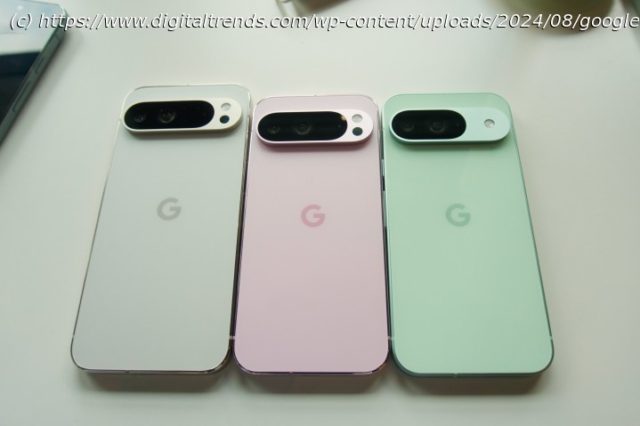The Google Pixel 9 and Pixel 9 Pro are very similar, but is it worth spending $200 more on the Pro?
The Google Pixel lineup consists of four models this year — the Google Pixel 9, Pixel 9 Pro, Pixel 9 Pro XL, and Pixel 9 Pro Fold. While the latter two are new monikers, there’s a lot that’s changing between the regular Pixel 9 and its Pro variant. The key differentiator between the two phones used to be their size. But that’s different this year. Both the Pixel 9 and Pixel 9 Pro offer the same size body and display. You’ll no longer be able to tell which is the more expensive Google phone just by looking at their size.
That could make picking one or the other confusing, but the Google Pixel 9 Pro also packs plenty of upgrades that could trigger a purchase decision. Here’s what you need to know about the Pixel 9 Pro and Pixel 9.Google Pixel 9 Pro vs. Pixel 9: specsGoogle Pixel 9 Pro vs. Pixel 9: design and build
The Google Pixel 9 Pro and Pixel 9 duo are housed in the same-size body, and both weigh just under 200 grams. They’re protected by Corning Gorilla Glass Victus 2 on both front and back. However, the rear finish is different. The Pixel 9 Pro offers a silky matte back, while the Pixel 9 has a satin finish.
The new Google phones feature a redesigned look where the iconic camera module is now pill-shaped and doesn’t flow into the body. The visor look is no longer subtle, but bolder and more prominent. While the Pixel 9 Pro sports three rear cameras, the Pixel 9 is limited to main and ultrawide sensors.
Both of them offer fingerprint-resistant coating and an IP68 rating for dust and water resistance. The Pixel 9 will be available in Obsidian, Porcelain, Wintergreen and Peony color options, whereas the Pro model is getting Obsidian, Porcelain, Hazel and Rose Quartz finishes.
There’s really not much to separate these two. This is a solid tie.
Winner: TieGoogle Pixel 9 Pro vs. Pixel 9: display and performance
For the first time, both the regular and Pro variants are equipped with the same-size display, but the quality varies. The Pixel 9 Pro features a 6.3-inch Super Actua LTPO OLED display with a refresh rate of 1Hz to 120Hz. By contrast, the Pixel 9 sports a 6.3-inch Actua OLED display with a 120Hz refresh, but the lack of a LTPO panel means it can only go down to 60Hz.
The more expensive sibling can go up to 2,000 nits (HDR) and up to 3,000 nits of peak brightness, while the Pixel 9 supports up to 1,800 nits (HDR) and up to 2,700 nits of peak brightness.






